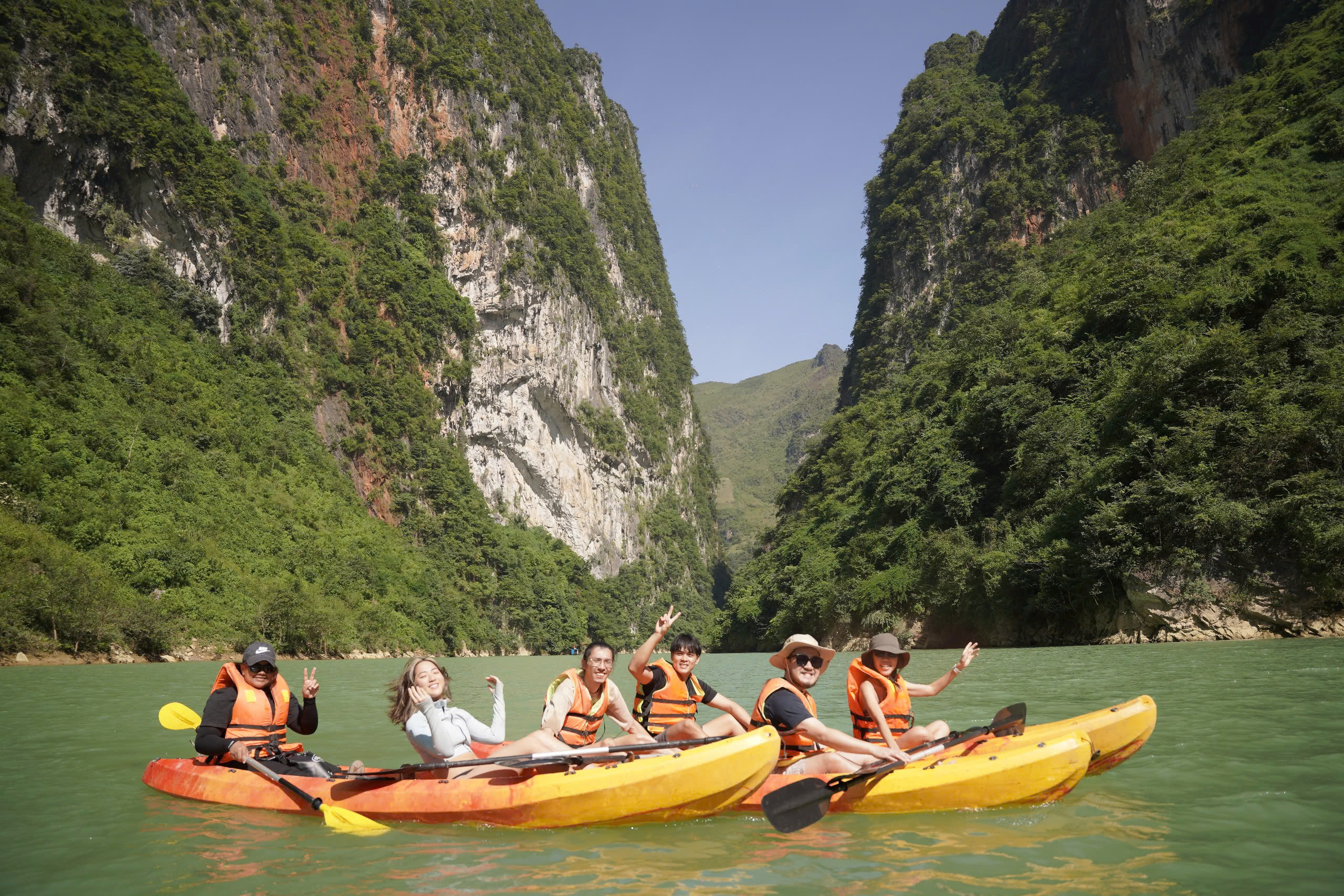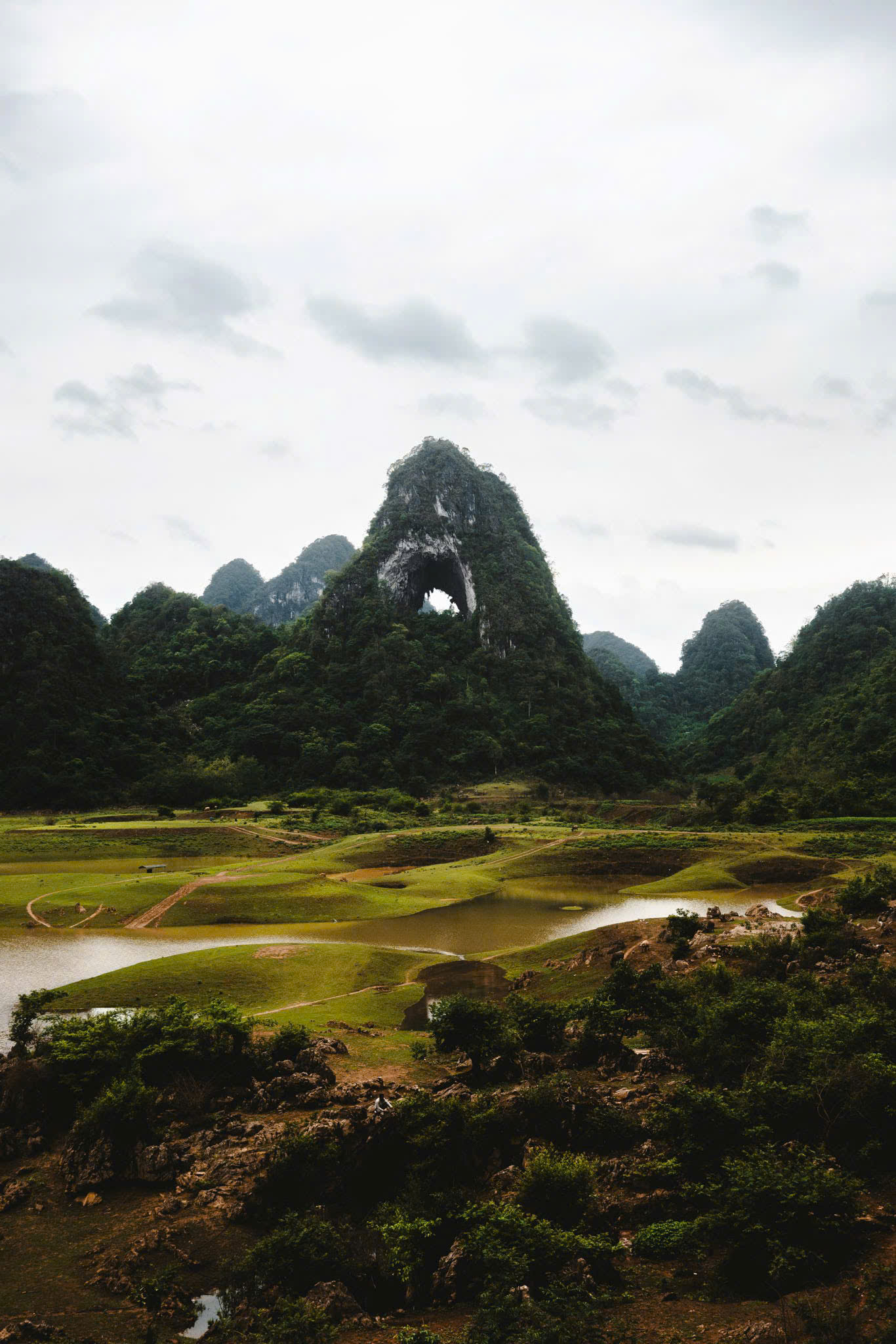Contents
The Northern Loop: Connecting Sapa, Ha Giang, Cao Bang & Ba Be
There’s a moment on the road between Sapa and Ha Giang when the rice terraces slowly fade into rocky mountains — and you realize you’re not just traveling anymore. You’re moving deeper into Vietnam’s wild north, where the road curves like a story still being written.
This journey — from Sapa to Ha Giang, then across Cao Bang to Ba Be Lake—is not the easiest route.
But it’s the one that stays with you.
Sapa — Where It All Begins
Sapa feels soft. The mist hangs low over the rice terraces, children run barefoot through the fog, and the sound of cowbells echoes between the hills.
Here, you walk through villages like Lao Chai and Ta Van, share a meal with a Hmong family, and realize that life can still be slow and beautiful.
At night, you sleep in a wooden house surrounded by green — and in the morning, the mountains are waiting again.
When you’re ready, take the long road east—about six or seven hours to Ha Giang city.
The scenery slowly changes. Terraces turn into sharp limestone cliffs. The air feels wilder.

Ha Giang — The Wild Heart of the North
This is where Vietnam starts to take your breath away.
The road winds up through Tham Ma Pass, climbs to Dong Van, and then opens suddenly at Ma Pi Leng — a canyon so deep it looks endless.
You stop the bike, silence the engine, and just… stare. The wind carries nothing but the sound of the river far below.
Ha Giang isn’t only about motorbikes.
You can trek along the White Cliff, kayak on Nho Que River, or walk through tiny Hmong villages where children wave and call “hello” as you pass.
The nights are cold and quiet in Du Gia, where dinner is served with homemade corn wine and laughter.
From here, the road east toward Cao Bang feels like a secret path — remote, raw, and beautiful.

Cao Bang — Land of Water and Stone
Cao Bang greets you with rivers so clear they mirror the sky. The villages here are simple — smoke rising from wooden houses, buffalo resting in the fields.
And then, suddenly, you reach Ban Gioc Waterfall — one of the most stunning places in all of Vietnam.
The water crashes across the border, separating Vietnam and China not with fences, but with mist and rainbows.
Take a boat close to the falls, visit Nguom Ngao Cave, or stop in Phuc Sen village where blacksmiths still hand-forge knives the old way.
It’s peaceful here. Different from Ha Giang — softer, more grounded.
Then you drive south again, toward Ba Be Lake, where the journey begins to slow down.

Ba Be — Where the Mountains Rest
After days of winding roads, Ba Be feels like an exhale.
The lake lies still among forests and limestone cliffs, with Tay villages built on stilts right at the water’s edge.
You can paddle across the lake, drift into Puong Cave, swim, or simply sit by the balcony watching fishermen glide silently across the water.
Dinner is fresh fish, sticky rice, and warm smiles.
It’s the kind of quiet that makes you want to stay a little longer — maybe one more night.
The Circle That Connects Everything
Sapa gives you the soft beginning, Ha Giang the wild heart, Cao Bang the calm wonder, and Ba Be the peaceful end.
Together, they form the Northern Loop — a perfect circle of Vietnam’s most breathtaking landscapes.
It’s not just a route.
It’s a rhythm — of roads, rivers, and real connections.
If You Go
-
Best time: September–November (harvest season) or March–May (flowers bloom)
-
Ways to travel:
-
Easy Rider / Motorbike – for freedom lovers
-
Private car—for comfort and deep conversations along the way
-
Trekking & kayaking tours—for those who want to truly feel the land
-
Travel with Ha Giang Expeditions
At Ha Giang Expeditions, we don’t just guide you through the north—we share it with you.
Our journeys connect Sapa, Ha Giang, Cao Bang, and Ba Be through local trails, family homestays, and real human stories.
Because the north isn’t something you just see —
It’s something you live.



